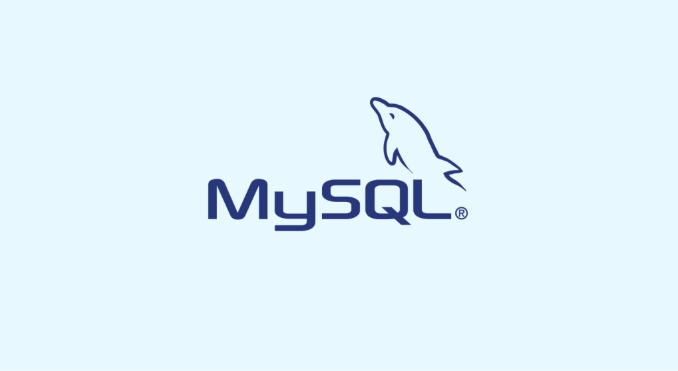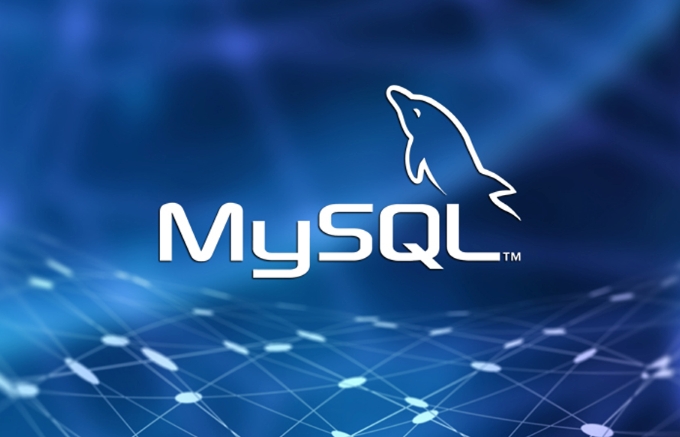Securing Your MySQL Server Against Common Vulnerabilities
Jul 07, 2025 am 02:06 AMThe following measures are required to strengthen the MySQL server: 1. Use strong passwords and restrict permissions, delete unnecessary users, avoid root remote login, and use GRANT and REVOKE to finely control access; 2. Close unnecessary services and ports, limit the access range of port 3306, and disable non-essential functions such as skip-networking and local_infile; 3. Regularly update the database version and enable log auditing, enable slow queries, errors, general and binary logs to track suspicious behavior; ensure database security by continuously paying attention to configuration, permissions, updates and monitoring.

As the core database system of many applications, MySQL server is crucial. If you don't pay attention to protecting it, you may be exploited by attackers to obtain sensitive data, tamper with information, and even control the entire server. Here are some practical practices to help you harden your MySQL server and prevent common security risks.

Use strong passwords and limit permissions
MySQL is usually installed by default with some default accounts or empty passwords, which can become attack portals. The first step is to make sure all users have strong passwords and only grant them the minimum permissions they need to complete the task.

- Check the user list regularly: Use
SELECT User, Host FROM mysql.user;to view all current users. - Delete unnecessary users: such as anonymous users (Anonymous) and test databases.
- Avoid using root Remote login: The root user has the highest permissions. If you must access remotely, it is recommended to create a dedicated account and limit its permissions.
In terms of permission management, you can use GRANT and REVOKE commands to finely control the access range of each user. For example:
GRANT SELECT, INSERT ON dbname.* TO 'user'@'host';
This can prevent an account from causing damage to the entire database.

Close unnecessary services and ports
MySQL listens on port 3306 by default, but if external access is not required, it should be restricted to local access only (binding to 127.0.0.1). This can be achieved by modifying bind-address in the configuration file.
- If remote connections must be allowed, a firewall should be used to restrict access to only specific IPs.
- Do not expose MySQL to the public network unless there is a very clear need and additional security measures are taken (such as SSL encryption, IP whitelist, etc.).
- Disable MySQL's "skip-networking" option (unless you do need to disable network access).
In addition, some non-essential functions and services should also be turned off, such as:
- Disable
local_infile: Prevent malicious files from injecting through LOAD DATA LOCAL INFILE. - Don't enable similar extension settings such as
allow_url_fopenunless necessary.
Regular updates and log audits
MySQL official releases security updates regularly to fix known vulnerabilities. Keeping the database version up to date is one of the important means of defending against attacks.
- Set up an automatic update mechanism or check official announcements regularly.
- Avoid using older versions that have been stopped supporting, they no longer receive security patches.
At the same time, turning on logging can help you track suspicious behavior:
- Enable slow query logs, error logs, and general query logs to help troubleshoot problems.
- Turning on binary logs (binlog) can be used to recover data and also helps analyze attack traces.
- Regularly review log content, especially when login failed frequently.
You can check whether the relevant logs are enabled in the following ways:
SHOW VARIABLES LIKE 'log_%';
If conditions permit, you can also use external tools to perform log analysis, such as ELK Stack or Graylog.
Basically that's it. MySQL security is not something that can be achieved overnight, but requires continuous attention to configuration, permissions, updates and monitoring. Some details seem simple, but they are often easily overlooked, thus becoming a breakthrough in attacks.
The above is the detailed content of Securing Your MySQL Server Against Common Vulnerabilities. For more information, please follow other related articles on the PHP Chinese website!

Hot AI Tools

Undress AI Tool
Undress images for free

Undresser.AI Undress
AI-powered app for creating realistic nude photos

AI Clothes Remover
Online AI tool for removing clothes from photos.

Clothoff.io
AI clothes remover

Video Face Swap
Swap faces in any video effortlessly with our completely free AI face swap tool!

Hot Article

Hot Tools

Notepad++7.3.1
Easy-to-use and free code editor

SublimeText3 Chinese version
Chinese version, very easy to use

Zend Studio 13.0.1
Powerful PHP integrated development environment

Dreamweaver CS6
Visual web development tools

SublimeText3 Mac version
God-level code editing software (SublimeText3)
 Connecting to MySQL Database Using the Command Line Client
Jul 07, 2025 am 01:50 AM
Connecting to MySQL Database Using the Command Line Client
Jul 07, 2025 am 01:50 AM
The most direct way to connect to MySQL database is to use the command line client. First enter the mysql-u username -p and enter the password correctly to enter the interactive interface; if you connect to the remote database, you need to add the -h parameter to specify the host address. Secondly, you can directly switch to a specific database or execute SQL files when logging in, such as mysql-u username-p database name or mysql-u username-p database name
 Handling character sets and collations issues in MySQL
Jul 08, 2025 am 02:51 AM
Handling character sets and collations issues in MySQL
Jul 08, 2025 am 02:51 AM
Character set and sorting rules issues are common when cross-platform migration or multi-person development, resulting in garbled code or inconsistent query. There are three core solutions: First, check and unify the character set of database, table, and fields to utf8mb4, view through SHOWCREATEDATABASE/TABLE, and modify it with ALTER statement; second, specify the utf8mb4 character set when the client connects, and set it in connection parameters or execute SETNAMES; third, select the sorting rules reasonably, and recommend using utf8mb4_unicode_ci to ensure the accuracy of comparison and sorting, and specify or modify it through ALTER when building the library and table.
 Implementing Transactions and Understanding ACID Properties in MySQL
Jul 08, 2025 am 02:50 AM
Implementing Transactions and Understanding ACID Properties in MySQL
Jul 08, 2025 am 02:50 AM
MySQL supports transaction processing, and uses the InnoDB storage engine to ensure data consistency and integrity. 1. Transactions are a set of SQL operations, either all succeed or all fail to roll back; 2. ACID attributes include atomicity, consistency, isolation and persistence; 3. The statements that manually control transactions are STARTTRANSACTION, COMMIT and ROLLBACK; 4. The four isolation levels include read not committed, read submitted, repeatable read and serialization; 5. Use transactions correctly to avoid long-term operation, turn off automatic commits, and reasonably handle locks and exceptions. Through these mechanisms, MySQL can achieve high reliability and concurrent control.
 Managing Character Sets and Collations in MySQL
Jul 07, 2025 am 01:41 AM
Managing Character Sets and Collations in MySQL
Jul 07, 2025 am 01:41 AM
The setting of character sets and collation rules in MySQL is crucial, affecting data storage, query efficiency and consistency. First, the character set determines the storable character range, such as utf8mb4 supports Chinese and emojis; the sorting rules control the character comparison method, such as utf8mb4_unicode_ci is case-sensitive, and utf8mb4_bin is binary comparison. Secondly, the character set can be set at multiple levels of server, database, table, and column. It is recommended to use utf8mb4 and utf8mb4_unicode_ci in a unified manner to avoid conflicts. Furthermore, the garbled code problem is often caused by inconsistent character sets of connections, storage or program terminals, and needs to be checked layer by layer and set uniformly. In addition, character sets should be specified when exporting and importing to prevent conversion errors
 Using Common Table Expressions (CTEs) in MySQL 8
Jul 12, 2025 am 02:23 AM
Using Common Table Expressions (CTEs) in MySQL 8
Jul 12, 2025 am 02:23 AM
CTEs are a feature introduced by MySQL8.0 to improve the readability and maintenance of complex queries. 1. CTE is a temporary result set, which is only valid in the current query, has a clear structure, and supports duplicate references; 2. Compared with subqueries, CTE is more readable, reusable and supports recursion; 3. Recursive CTE can process hierarchical data, such as organizational structure, which needs to include initial query and recursion parts; 4. Use suggestions include avoiding abuse, naming specifications, paying attention to performance and debugging methods.
 Strategies for MySQL Query Performance Optimization
Jul 13, 2025 am 01:45 AM
Strategies for MySQL Query Performance Optimization
Jul 13, 2025 am 01:45 AM
MySQL query performance optimization needs to start from the core points, including rational use of indexes, optimization of SQL statements, table structure design and partitioning strategies, and utilization of cache and monitoring tools. 1. Use indexes reasonably: Create indexes on commonly used query fields, avoid full table scanning, pay attention to the combined index order, do not add indexes in low selective fields, and avoid redundant indexes. 2. Optimize SQL queries: Avoid SELECT*, do not use functions in WHERE, reduce subquery nesting, and optimize paging query methods. 3. Table structure design and partitioning: select paradigm or anti-paradigm according to read and write scenarios, select appropriate field types, clean data regularly, and consider horizontal tables to divide tables or partition by time. 4. Utilize cache and monitoring: Use Redis cache to reduce database pressure and enable slow query
 Designing a Robust MySQL Database Backup Strategy
Jul 08, 2025 am 02:45 AM
Designing a Robust MySQL Database Backup Strategy
Jul 08, 2025 am 02:45 AM
To design a reliable MySQL backup solution, 1. First, clarify RTO and RPO indicators, and determine the backup frequency and method based on the acceptable downtime and data loss range of the business; 2. Adopt a hybrid backup strategy, combining logical backup (such as mysqldump), physical backup (such as PerconaXtraBackup) and binary log (binlog), to achieve rapid recovery and minimum data loss; 3. Test the recovery process regularly to ensure the effectiveness of the backup and be familiar with the recovery operations; 4. Pay attention to storage security, including off-site storage, encryption protection, version retention policy and backup task monitoring.
 Optimizing complex JOIN operations in MySQL
Jul 09, 2025 am 01:26 AM
Optimizing complex JOIN operations in MySQL
Jul 09, 2025 am 01:26 AM
TooptimizecomplexJOINoperationsinMySQL,followfourkeysteps:1)EnsureproperindexingonbothsidesofJOINcolumns,especiallyusingcompositeindexesformulti-columnjoinsandavoidinglargeVARCHARindexes;2)ReducedataearlybyfilteringwithWHEREclausesandlimitingselected






